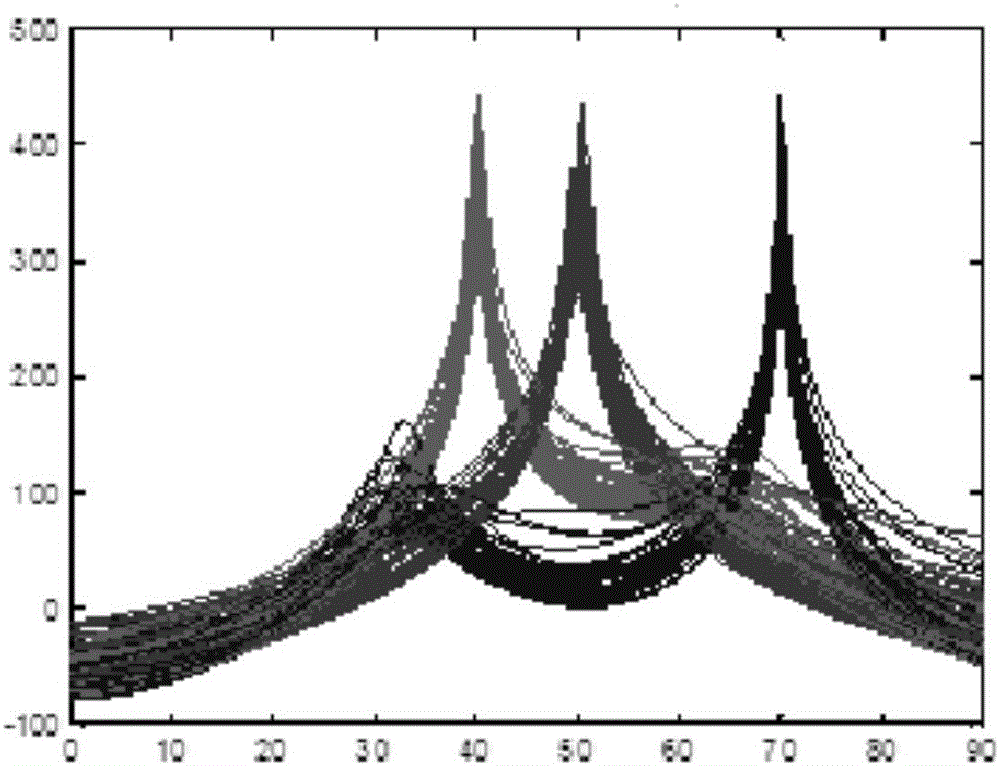A Sum-Difference Algorithm for AOA Detection of Mobile Sensor Array
A technology of mobile sensors and arrays, applied in instruments, radio wave measurement systems, etc., can solve the problems of inability to accurately estimate AOA and low estimation accuracy, achieve the effect of overcoming the limitations of array structure requirements and improving estimation accuracy
- Summary
- Abstract
- Description
- Claims
- Application Information
AI Technical Summary
Problems solved by technology
Method used
Image
Examples
Embodiment 1
[0049] The present invention provides a sum-difference algorithm for AOA detection of a mobile sensor array. The sum-difference algorithm for AOA detection of a mobile sensor array includes:
[0050] Step 1, deploy the signal receiving array.
[0051] Step 2, signal reception is performed through the signal receiving array at a preset time, and the received signal is x 1 、x 2 ,...,x k , where k are different receiving moments.
[0052] Step 3, according to the received signal, determine the received data and x at the first K moments ΣK , the first (n-1) K moments receive data and x Σ(n-1)K , correct the data received at the first (n-1) K times and correct them, and obtain the corrected data and x at the first (n-1) K times after correction Σ(n-1)K '.
[0053] Step 4: Obtain the received data at the nKth moment, and then obtain the corrected correction data at the nKth moment, and combine the correction data at the first K moments with x ΣK ’ to get the corrected sample ...
PUM
 Login to View More
Login to View More Abstract
Description
Claims
Application Information
 Login to View More
Login to View More - Generate Ideas
- Intellectual Property
- Life Sciences
- Materials
- Tech Scout
- Unparalleled Data Quality
- Higher Quality Content
- 60% Fewer Hallucinations
Browse by: Latest US Patents, China's latest patents, Technical Efficacy Thesaurus, Application Domain, Technology Topic, Popular Technical Reports.
© 2025 PatSnap. All rights reserved.Legal|Privacy policy|Modern Slavery Act Transparency Statement|Sitemap|About US| Contact US: help@patsnap.com



